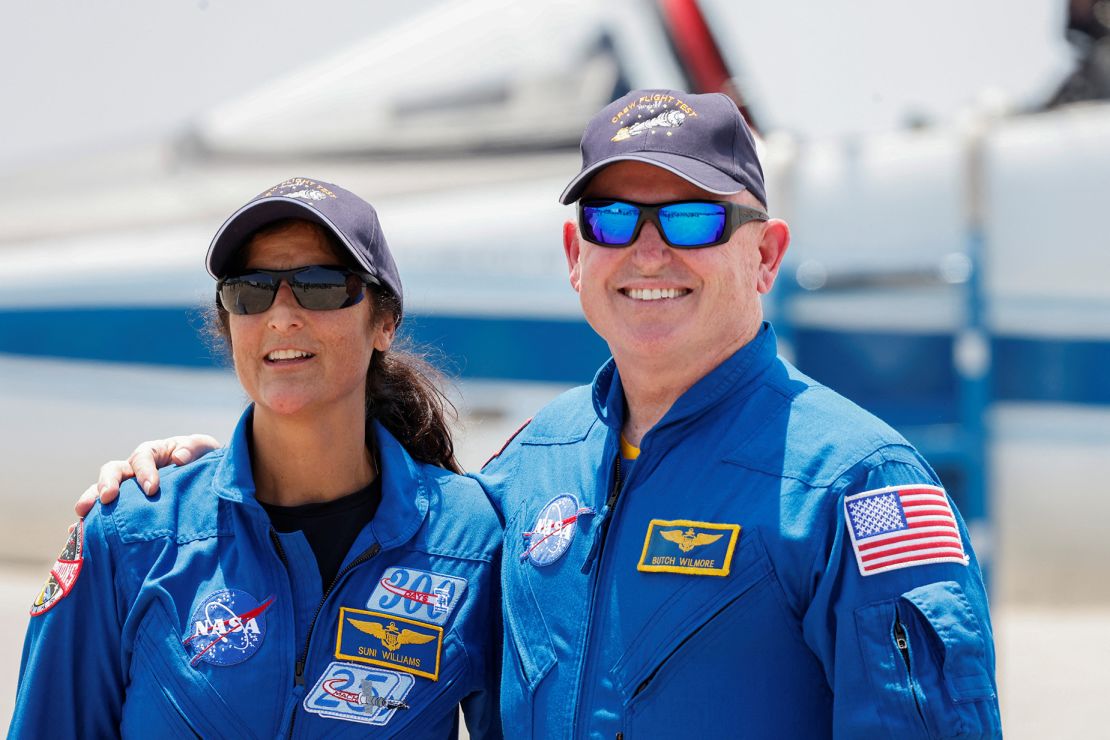Sign up for CNN’s Wonder Theory science newsletter. Explore the universe with news on fascinating discoveries, scientific advancements and more.
A Saturday launch for the highly anticipated crewed maiden voyage of Boeing’s Starliner is off the table — and NASA has announced a new target date.
Starliner’s first flight carrying astronauts is now expected to lift off no earlier than June 1 at 12:25 p.m. ET, with several backup opportunities in the days following, according to a statement from NASA late Wednesday.
“Mission managers from NASA, Boeing, and ULA (United Launch Alliance) continue to evaluate a path forward toward launching the agency’s Boeing Crew Flight Test to the International Space Station,” the space agency said in the statement.
The update comes after several previous delays this month, and a week after Starliner mission teams reported a small helium leak in the service module of the spacecraft. They traced the leak to a part called a flange on a single reaction control system thruster, where helium is used to allow the thrusters to fire.
Last week, NASA announced that teams were aiming to launch no earlier than May 25, saying the additional time before launch would give specialists more time to evaluate the issue. The agency said tests have found that the leak doesn’t pose a threat to the mission. However, while studying the leak, mission teams also spotted a “design vulnerability” in the propulsion system — essentially identifying a remote scenario in which certain thrusters might fail as the vehicle was leaving Earth’s orbit, without a backup method of getting home safely.
NASA and Boeing have since worked with the vendor of the thruster to come up with a backup way to perform the deorbit burn, should that situation arise, said Steve Stich, manager of NASA’s Commercial Crew Program, in a Friday news conference.
“We have restored that redundancy for the backup capability in a very remote set of failures for the direct burn,” Stich said. “We’re going to have a (Delta-Agency Flight Test Readiness Review) on May 29 to review both the leak and the changes to the way we would execute a deorbit burn in a remote set of failures.”
This mission, dubbed the Crew Flight Test, could be the final major milestone before NASA deems Boeing’s spacecraft ready for routine operations as part of the federal agency’s Commercial Crew Program.
The historic crewed flight was about two hours from liftoff on May 6 when it was scrubbed due to an issue with the a valve on the second stage, or upper portion, of the Atlas V rocket that Starliner will ride to space.
The NASA astronauts set to crew the mission for a weeklong stay at the International Space Station, Suni Williams and Butch Wilmore, returned to Houston on May 10 to spend time with their families, Boeing said last week. They remain in pre-flight quarantine and continue to practice in Starliner simulators, the space agency said.
Boeing’s historic goals

The Crew Flight Test is a decade in the making — the culmination of Boeing’s efforts to develop a spacecraft worthy of ferrying astronauts to and from the International Space Station under NASA’s commercial program.
The launch would mark only the sixth maiden voyage of a crewed spacecraft in US history, NASA Administrator Bill Nelson noted in a news conference earlier this month.
“It started with Mercury, then with Gemini, then with Apollo, the space shuttle, then (SpaceX’s) Dragon — and now Starliner,” he said.
On board, Williams will also make history as the first woman to embark on such a mission.
Boeing designed the Starliner to rival SpaceX’s prolific Crew Dragon capsule and expand US options for ferrying astronauts to the space station.
A rocky start
Development hang-ups, test flight problems and other costly setbacks have slowed Starliner’s path to the launchpad. Meanwhile, Boeing’s rival under NASA’s commercial crew program — SpaceX — has become the go-to transportation provider for the space agency’s astronauts.
Williams and Wilmore were already in their seats aboard the Starliner capsule May 6 when engineers found an issue and halted the launch.
The United Launch Alliance team, which builds the Atlas V rocket, identified a pressure regulation valve on a liquid oxygen tank that needed replacing. The valve has since been replaced, but the latest issue with the helium leak on the Boeing spacecraft that sits atop the rocket caused further delay.
“There has been a great deal of exceptional analysis and testing over the last two weeks by the joint NASA, Boeing, and ULA teams to replace the Centaur Self Regulating Valve and troubleshoot the Starliner Service Module helium manifold leak,” Stich said.
“It has been important that we take our time to understand all the complexities of each issue including the redundant capabilities of the Starliner propulsion system and any implications to our Interim Human Rating Certification,” he said. “We will launch Butch and Suni on this test mission after the entire community has reviewed the teams progress and flight rationale at the upcoming Delta Agency Flight Test Readiness Review.”
If the spacecraft does launch next week as planned, it and the astronauts inside will break away from the Atlas V rocket after reaching orbit, as Starliner begins firing its own engines. The vehicle will likely spend more than 24 hours gradually making its way to the space station.
Williams and Wilmore are set to spend about a week at the orbiting laboratory, joining the seven astronauts and cosmonauts already on board, while the Starliner remains docked outside.
The history-making crew will then return home aboard the same Starliner capsule, which is expected to parachute to a landing at one of several designated locations across the southwestern United States.
CNN’s Jackie Wattles and Ashley Strickland contributed to this story.
This story has been updated with additional information on the issues identified by Starliner mission teams.






